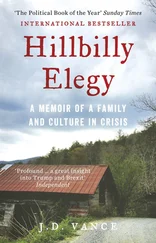In the summer of 2017, six leading scientists and decision-makers on environmental issues wrote in the journal Nature that humanity had three years left to get the emissions curve to change direction – to take a steep downward turn. Three years to safeguard the planet and if we are not going to achieve that, then we’re at great risk of missing the Paris Agreement’s well below 2°C target and thereby placing ourselves in great danger of starting a negative spiral of climate disasters far beyond our control.
That is, as long as the world is not prepared, by the year 2025, to close almost all factories and let all cars and airplanes stay parked and slowly rust, while we eat what’s left in the pantry. And the authors of this article aren’t usually counted among the alarmists.
‘These are the optimists,’ the Washington Post wrote.
• • •
Now more than a year has passed and there are almost no signs of the revolutionary changes required and the leadership we so desperately need. Sweden is a pioneering country , we often hear. But the truth is that there are no pioneering countries. At least, not in our part of the world. Because our climate and environmental struggle has got nothing to do with rescuing the climate – we’re fighting for the possibility to keep on living the way we do.
SCENE 46.
Anno Domini 2017
In the year 2017, 9 million people died from environmental pollution.
Over 20,000 researchers and scientists issued a sharp warning to humanity and explained that we’re heading for a climate and sustainability catastrophe; time is running out.
In the year 2017, German researchers determined that 75–80 per cent of insects had disappeared. Not much later came the report that the bird population in France has ‘collapsed’, and that certain bird species have been reduced by up to 70 per cent because they have no insects to eat.
In the year 2017, forty-two individuals had more money than half the world’s population combined and 82 per cent of the world’s total increase in wealth went to the richest 1 per cent.
Sea ice and glaciers were melting at a record rate.
65 million people were displaced.
Hurricanes and torrential rain claimed thousands of victims, drowned cities and smashed whole nations to bits.
It was also the year when the emissions curve again turned upwards, at the same time as the quantity of CO 2in the atmosphere increased at a velocity which, from a larger geologic perspective, can only be compared to pressing the warp button in a Star Trek movie.
SCENE 47.
No, Please, No More Pieces About the Climate
‘The climate is a burning issue. It’s super-important. But I want you to write about other topics.’
Once a month I write for MittMedia and Dalarnas Tidningar and today is the November deadline. My very shrewd and intelligent editor has just received another 750 words about the climate and between the lines she is venting her frustration.
‘I don’t want any more pieces about the climate!’
I could not agree more. I don’t want any more pieces about the climate either. I want to write about other things. Things that the newspaper and I have agreed to focus on. Culture. Thriving rural towns. Humanitarian projects. Anti-racism. The municipal music school, or really anything at all.
I want to be like other columnists who write about everything imaginable, and who might go against the current every other month with a column about climate change, only to return to writing about hospital food, Muslim calls to prayer in the city of Sundsvall or whichever social phenomenon is on everyone’s lips right there and then.
I want to think in line with everyone else when they list the most important issues before the election campaign and mention five or ten different matters that don’t get enough attention and that we ought to be talking about more. I too want to list the climate threat as number three, perhaps after the school system and healthcare.
But I can’t because now things are the way they are. And however much I try to ignore it, it just doesn’t work. I’m fascinated by those who manage to engage with other issues. It’s a little like discovering people in the early twentieth century passionate about issues that don’t in some way concern the universal right to vote, the condition of the working class, women’s liberation or the right to belong to a trade union.
Except that this is much, much more dramatic. Because a hundred years ago you didn’t have a gigantic clock counting down the fate of all future generations right in front of your eyes.
‘The issue is too big,’ Svante and I often hear. ‘It’s impossible to take in.’
And this is both true and not true at the same time.
It’s actually fairly easy to get involved in the problem
if you’re so inclined. If you’re prepared to make the sacrifice,
to renounce some privileges and take a couple of steps backwards.
Because the climate issue in itself is not all that difficult or hard to fathom. But it is too uncomfortable.
A bit like being cozily curled up, deep asleep in a warm corner of a big sleeping bag inside a rain-drenched tent. You don’t really want to get up and deal with the problem. You want to go on sleeping. Like everyone else.
My last column in Dalarnas Tidningar is about the fact that MittMedia continues to publish unrefuted opinion pieces written by climate-change deniers. And that my conscience does not allow me to work for newspapers that give editorial space to climate-change or Holocaust deniers.
But MittMedia has no plans to change, so I say goodbye. And my last column is never published.
SCENE 48.
Unscientific Research
‘New record!’
It’s Saturday morning and Greta bounds into the kitchen waving a sheet of paper filled with figures and columns. ‘Over one per cent are about the environment or the climate. Most are short pieces or old articles that are still up, of course, but still.’
• • •
It all started with someone we knew saying that reading the newspaper would soon be unbearable because there were so many awful things being reported all the time: ‘It’s just crisis upon crisis. War, Trump, violence, crime and climate change.’
Greta did not recognize her own experience in that description of reality, but our friend wasn’t alone in her opinion: that there was so much awful news about the climate.
Our daughter – in contrast to our friend – thought that there was almost never anything written about the climate, the environment or anything else to do with sustainability, and for that reason she decided to take a good look for herself.
She started by regularly counting through what the four major daily newspapers in Sweden were publishing on their news sites – and what they weren’t publishing.
How many articles were about climate and environment? And how many were about things that stood in fairly direct opposition to the subject – for example, package holidays, shopping or cars? The result was basically the same every time. Climate and environment varied between 0.3 and 1.4 per cent while the other topics were considerably higher.
• • •
When one of Sweden’s largest newspapers started a climate campaign that would ‘permeate the whole editorial office’, Greta followed their reporting five weeks in a row and the result was less than impressive.
Shopping: 22 per cent; cars: 7 per cent; air travel: 11 per cent.
Читать дальше






![Корнелл Вулрич - Murder at Mother’s Knee [= Something That Happened in Our House]](/books/398097/kornell-vulrich-murder-at-mother-s-knee-somethin-thumb.webp)





